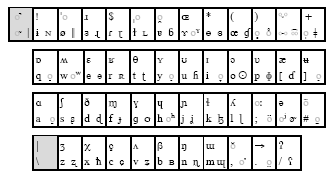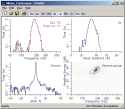Phonetics, Phonetic Symbols, Phonetic Keyboard
This page provides some information and resources in Phonetics and in the use of the International Phonetics Association alphabet of phonetic symbols for the transcription of speech using computers.
Phonetics
Unicode Phonetic Keyboard and SIL Fonts
 The Unicode Phonetic Keyboard is an installable keyboard for Windows PCs that provides a convenient keyboard layout for the word-processing of phonetic transcription using Unicode fonts. The installation package comes complete with two Unicode fonts: Doulos and Charis that have been developed by SIL.
The Unicode Phonetic Keyboard is an installable keyboard for Windows PCs that provides a convenient keyboard layout for the word-processing of phonetic transcription using Unicode fonts. The installation package comes complete with two Unicode fonts: Doulos and Charis that have been developed by SIL.
- Download Unicode Phonetic Keyboard 1.02 (self-install executable, 2MB)
- Download Unicode Phonetic Keyboard 1.10 (Vista/Vista64) (self-install executable, 2MB)
- Download Keyboard Layout (PDF)
Guide to the use of Unicode Phonetic Symbols
John Wells has written a number of pages which give more information about the set of phonetic symbols available in Unicode, and about how these can be used in Microsoft Word and other applications:
IPA-SAM Phonetic Fonts
The IPA-SAM fonts are a set of TrueType fonts (not Unicode) suitable for Windows and MacOS that include all current IPA symbols. The keyboard layout is designed to be compatible with SAMPA.
Use of Phonetic Symbols
Choice of phonetic symbols for English - John Wells. This is the standard set of phonemic symbols recommended for English (RP and similar accents).
SAMPA is a phonetic transcription coding that uses normal ASCII characters as replacements for IPA symbols. It has been designed for phonemic/broad phonetic transcription of European languages.


